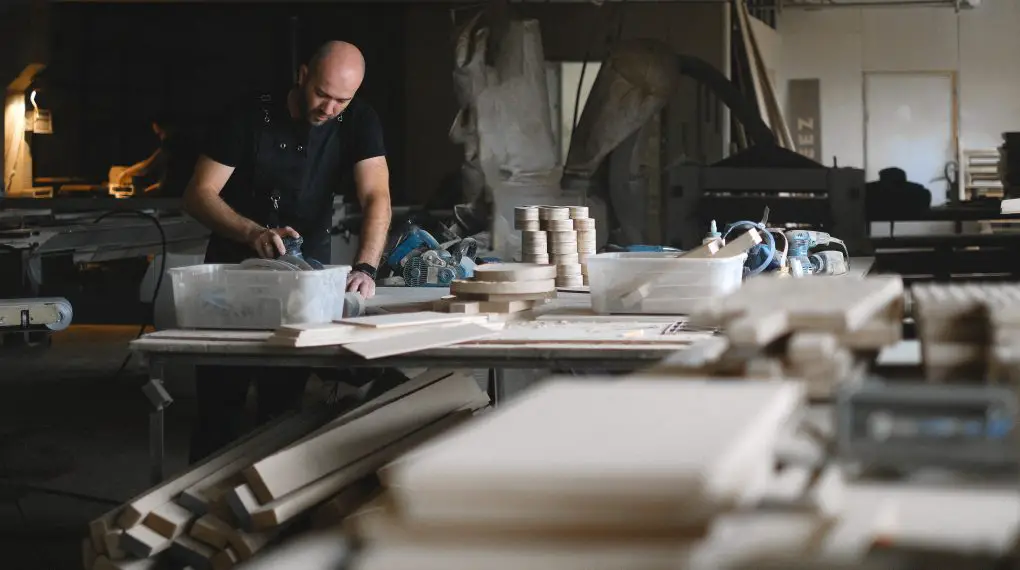If you’re struggling with how to sand around curves, you’ve come to the right place. Sanding curves can be challenging, but it’s a task you can easily accomplish with the right techniques and tools.

Why Learning How to Sand Around Curves is Important
When working on wood projects that have rounded or curved surfaces, it’s crucial to know how to sand around curves effectively. Proper sanding ensures a smooth finish and helps paint or stain adhere better to the wood.
Things You Will Need
Sandpaper (various grits)
Electric sander (optional)
Step-by-Step Guide: How to Sand Around Curves
Here’s how to sand around curves…
Step 1: Prepare Your Workspace
Before jumping into the task, it’s essential to get your workspace ready for action. The area should be free of clutter and other distractions that could interfere with your work.
Clear the Area: Remove any unrelated items, tools, or obstacles from the workspace.
Check the Lighting: Ensure that the area is well-lit. You need to see clearly to sand effectively. Consider bringing in additional lighting if necessary.
Secure the Wood Piece: Use clamps to secure the wood piece onto a stable surface. This ensures that the piece won’t move, making your work safer and more accurate. If you’re working on a larger piece that cannot be clamped, place it on a rubber mat to prevent slipping.
Step 2: Choose the Right Sandpaper
Choosing the right sandpaper is critical to achieving a smooth result.
Understand Grit Numbers: The grit number refers to the coarseness of the sandpaper. Lower numbers like 60 or 80 are coarse and good for removing material quickly but leave a rough surface. Higher numbers like 180 or 220 are fine and are used for finishing touches.
Match Grit to Surface: For rough, untreated wood, start with a coarse grit. As you make progress, you can switch to finer grits for a smoother finish.
Step 3: Begin Sanding
Once your workspace is set up and you’ve chosen your sandpaper, you can start sanding.
Hold the Sandpaper: Grasp the sandpaper or sanding block firmly in your hand. If using a sanding block, wrap the sandpaper around it for better control.
Apply Even Pressure: Use consistent pressure as you sand, but don’t press down too hard as that can create uneven surfaces.
Follow the Grain: Always sand in the direction of the wood grain. Sanding against the grain can cause scratches that are difficult to remove.
Cover the Curve: As you move along the curved area, ensure you are sanding every part of it for a uniform look.
Step 4: Check Your Progress
Sanding is a process, and it’s important to periodically evaluate your work.
Pause and Inspect: Take a moment to stop sanding and visually inspect the wood. Run your fingers over the surface to feel for any uneven spots or rough patches.
Treat Problem Areas: If you find any areas that need more work, mark them with a pencil and focus your next sanding pass on these spots.
Step 5: Finish Up
Once you are satisfied with the smoothness, you’re ready for the final steps.
Switch to Finer Grit: For a refined finish, you can switch to a higher grit sandpaper and go over the curve one more time.
Clean the Surface: Use a damp cloth or a tack cloth to wipe away any sawdust or debris from the wood. This prepares the wood for staining or painting.
Common Mistakes and How to Avoid Them
Sanding too quickly or using the wrong grit can lead to uneven surfaces. Always take your time and choose the appropriate sandpaper for your specific project.
For more articles on sanding, click here: Sanding: Your Full-Circle Guide to Smooth Mastery
Conclusion: How to Sand Around Curves
Learning how to sand around curves may seem daunting at first, but with the right tools and techniques, you’ll master this skill in no time. Remember to prepare, select the right sandpaper, and take your time for a flawless finish.
